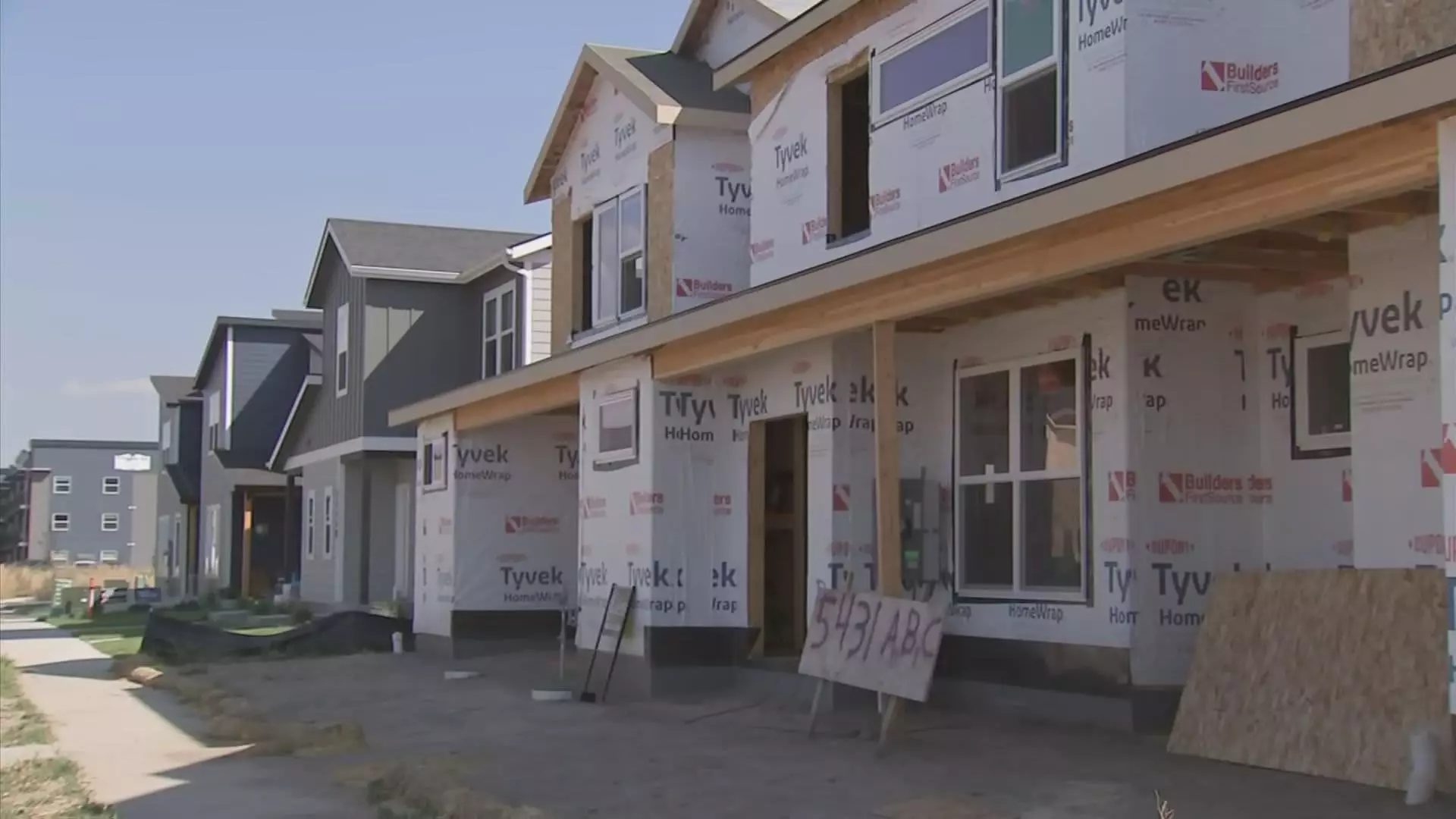In recent years, Montana has witnessed a significant transformation in its housing landscape, especially in its swiftly growing cities like Missoula. The influx of out-of-state residents, driven by the allure of the Big Sky state’s natural beauty and quality of life, has caused a substantial spike in housing demand. This surge, coupled with the inherent shortage of available labor, has culminated in heightened concerns over housing affordability for local residents. As Montana grapples with these issues, the upcoming Senate race has become a focal point, as candidates are compelled to confront the pressing challenges facing homeowners and prospective buyers in the state.
At the heart of Montana’s housing dilemma is the stark contrast between rising home prices and stagnant or declining wages for many residents. Over the past few years, the state has recorded a staggering 66% increase in housing prices, outpacing the national average of 50%. This alarming trend has rendered homeownership an elusive dream for numerous Montanans. DJ Smith, the president of the Montana Association of Realtors, emphasizes that many locals are finding it increasingly difficult to secure affordable housing that meets their needs. Those who once lived comfortably in their communities are now grappling with market forces that favor wealthier newcomers, effectively pushing them out of the neighborhoods they once called home.
The distinct challenges pertaining to affordability are further accentuated by the fact that Montanans must now contend with buyers from higher-cost states such as California and Colorado. These out-of-state individuals are often cash buyers, fueled by substantial equity from selling their homes, which provides them with significant leverage in a competitive market. In Missoula, for instance, the median home price has skyrocketed to approximately $568,377—an amount that starkly contrasts with the median household income in the area of $67,631. This disconnect exemplifies the urgent need for strategies aimed at easing the housing burden on local residents.
As the housing crisis mounts, it has inevitably become a focal point in Montana’s political arena, particularly in the lead-up to the Senate elections. Democratic Senator Jon Tester has placed housing affordability at the forefront of his campaign, arguing that the influx of wealth from outside the state is intensifying the housing challenges faced by everyday Montanans. Tester claims that “rich folks” from out of state are attempting to reshape Montana’s identity through their investments, which only exacerbates the struggles of current residents.
On the opposite side, Republican nominee Tim Sheehy offers a contrasting narrative—attributing rising housing costs primarily to inflation and government policies. Sheehy argues that the current administration and its policies have engendered an economic environment that stifles growth and exacerbates inflation, which, in turn, has driven up housing prices. This ideological battle serves as a microcosm of larger national conversations about inflation, economic policy, and community welfare, highlighting how locally relevant issues have far-reaching political implications.
One often-overlooked factor contributing to the housing crunch is the labor shortage within Montana’s construction industry. Local builders like Andrew Weigand point out that the diminishing pool of skilled subcontractors, coupled with increasing project demand, has further driven up construction costs. This situation is aggravated by an aging workforce; many seasoned professionals are nearing retirement, and the next generation is not entering the trades at the same rate. Consequently, the construction and renovation of affordable housing units are stymied, further deepening the affordability crisis.
To address this labor gap, there is a growing conversation around the need for innovative solutions, such as enhancing trade programs to attract younger workers into construction and related fields. Without a sufficient workforce to meet current and future housing demands, Montana may face continued struggles in balancing the housing market, leaving many residents in precarious situations regarding their living conditions.
Amid these challenges, solutions are being proposed to alleviate the affordable housing crisis in Montana. Tester has put forth several initiatives aimed at expanding housing access, including grants focused on constructing affordable units and aiding residents with home repairs. He has also suggested implementing tax incentives for mobile home park owners to transition their properties to community-owned coalitions rather than for-profit developers, which may lead to more balanced development practices.
Conversely, Sheehy advocates for enhancing existing trade programs to address labor shortages and stimulate the local economy. These proposed solutions underscore a critical realization: resolving the housing crisis in Montana will require a multifaceted approach that considers not only the immediate need for affordable residences but also the underlying economic conditions and workforce dynamics.
As Montana faces a precarious housing situation marked by escalating prices and diminishing availability, both the political implications and demographic shifts must be navigated carefully. Engaging in comprehensive dialogue about sustainable development practices, labor needs, and assistance for local residents will be paramount in creating a housing landscape that is not only accessible but also equitable. Ultimately, the way forward will necessitate collaboration between government, business, and community members to build a future where all Montanans can find a place to call home.

